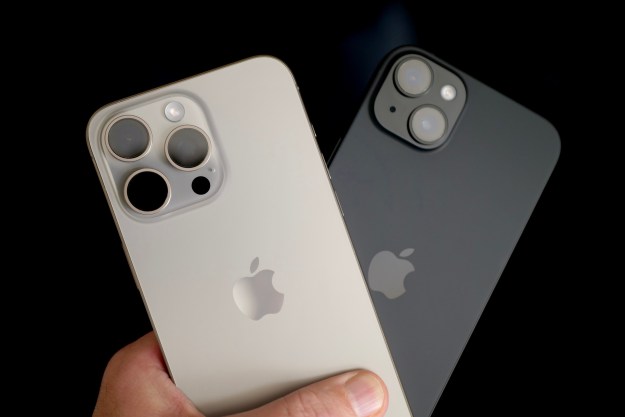
For the iPhone 7, it’s thought Apple wants to go even thinner than the current device.
According to KGI Securities’ Ming-Chi Kuo, an analyst who’s called it right in the past when forecasting Apple moves, the thickness of the iPhone 7 will be between just 6 and 6.5 millimeters – that’s potentially even thinner than the current iPod Touch and iPad Air 2, which register at 6.1mm.
The information, contained in a notes Kuo sent to investors, was obtained by Apple Insider on Sunday.
The current iPhone 6 has a thickness of 6.9mm while the 6 Plus is 7.1mm, so lopping off another millimeter may not sound like much, but could make a difference in some people’s hands and pockets – though let’s hope that extra thinness doesn’t lead to another round of potentially damaging #Bendgate stories.
And before you start wondering about the thickness of the iPhone 6S, well, Apple Insider says that because it’s likely to be built with the new and tougher 7000-series aluminum, it could end up a millimeter or so thicker than the current model.
Sunday’s report suggests Apple may stick to using in-cell panels for the iPhone 7 instead of switching back to glass-on-glass screen technology as was suggested in several reports last week. It’s to do with the tech firm’s pressure-sensitive Force Touch technology, which is already used in the Apple Watch and the new MacBook, and is expected to show up for the first time in this week’s revamped iPhone.
“Apple and its suppliers have invested heavily in iPhone Force Touch in 2015 and we believe 2016 new models will stick with a similar Force Touch structure as used in 2015,” Kuo wrote in his note.
The glass-on-glass technology would allow for a super-HD 4K display, but in its current state would make the iPhone 7 thicker. So while we could see the thinnest iPhone yet in 2016, those for whom Retina isn’t enough may have to wait a little longer for a display upgrade.
Editors' Recommendations
- Why you should buy the iPhone 15 Pro instead of the iPhone 15 Pro Max
- 3 reasons why I’ll actually use Anker’s new iPhone power bank
- There’s a big problem with the iPhone’s Photos app
- This one thing could make iOS 18 the best iPhone update in years
- When will Apple release iOS 18? Here’s what we know


